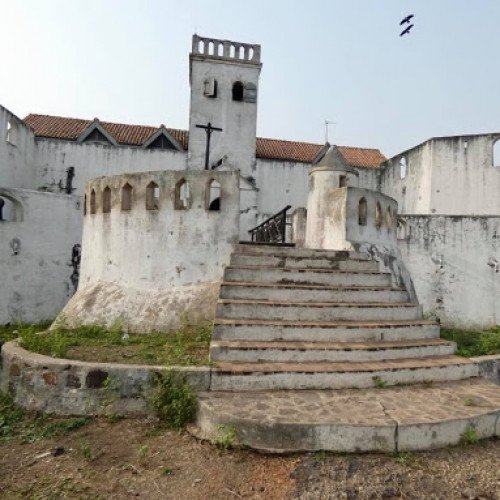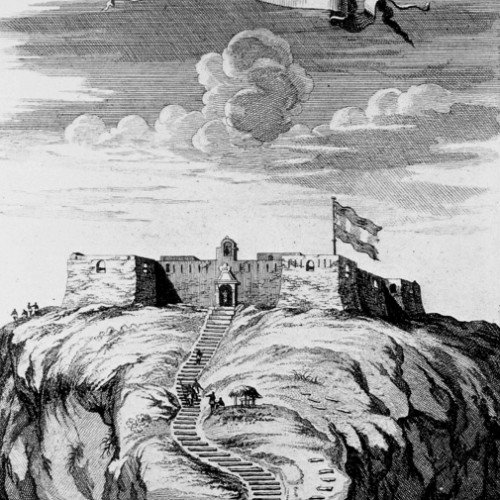Castles of "Ghana" FORT COENRAADSBURG vs FORT BATENSTEIN

FORT COENRAADSBURG
Fort Coenraadsburg or Conraadsburg, also Fort São Tiago da Mina, is a small Portuguese chapel built in honor of Saint Jago and it is situated opposite the Elmina Castle in the Central region of Ghana, to protect Fort Elmina from attacks. Fort Conraadsburg was built in the 1660s. It was built on the site of a fortified chapel that the Portuguese had built and that the Dutch had burned to the ground in the Battle of Elmina (1637). The Dutch ceded the fort to Britain in 1872, together with the entire Dutch Gold Coast. Before the fort was built, the Dutch used the hill as a gun-position to bombard the Portuguese in the year 1637. To prevent others from doing the same tactic against the Portuguese, the Dutch constructed a fortified earthwork the following year In the 1660s, the then Elmina Castle Director General J. Valckenburgh changed the earthen fortification with a permanent fort made up of local sandstone and named it Coenraadsburg. The fort was built mainly for military purposes so it had no commercial warehouses. The fort was well-garrisoned so the Dutch used it as a prison for European convicts and also as a disciplinary institution for their officers who are disobedient to their laws. Ever since the fort was transferred from the Dutch to the British, they modified the fort for the easy use of it for civilian pursuit. In recent years, the fort has been used as a prison, a hospital and a rest house. The fort currently in a good condition, is used as an inn and a restaurant. The fort opening hours are 9:00am to 4:30pm.
Statistics for this Xoptio

FORT BATENSTEIN
Fort Batenstein was a fort and trading post established by the Dutch on the Gold Coast in 1656. It was situated near Butre (old spelling: Boutry). The fort was ceded with the entire Dutch Gold Coast to Britain in 1872. At this fort, the Treaty of Butre was signed on 27 August 1656 between the Dutch and the Ahanta. Fort Batenstein was built by the Dutch West India Company, not because of promising trade opportunities in the area, but to crush the attempts of the Swedish Africa Company to establish trading posts on the Gold Coast. Hendrik Carloff, who had previously worked for the Dutch West India Company, founded a trading lodge at Butre in 1650, which was attacked on the instigation of the Dutch by the people of Encasser in 1652. To make sure the Swedes would not return, the Dutch started building a fort on top of the hill overlooking Butre bay, which was completed by 1656. On this occasion, the Dutch signed a treaty with the local population in which the people of Upper Ahanta and Butre subject themselves to the authority of the Dutch West India Company. The formulation of the treaty stands in stark contrast to the earlier Treaty of Axim, which governed the relationship between the Dutch and the peoples around Fort Saint Anthony, and which phrased the relationship in terms of mutual obligations and jurisdictions. In the 18th century, a sawmill was constructed at Fort Batenstein, which provided the forts and ships in need of repair with wood. Fort Batenstein was not an important fort until 1837, when the Dutch–Ahanta War made it the focal point of Dutch military effort on the Coast. After the war, the Dutch made Ahanta a protectorate of which the commandant of Fort Batenstein was made the vice governor, thereby citing the provisions of the Treaty of Butre of 1656. In the years that followed, the Dutch attempted to establish a gold mine near Butre, which failed to produce any gold, however.